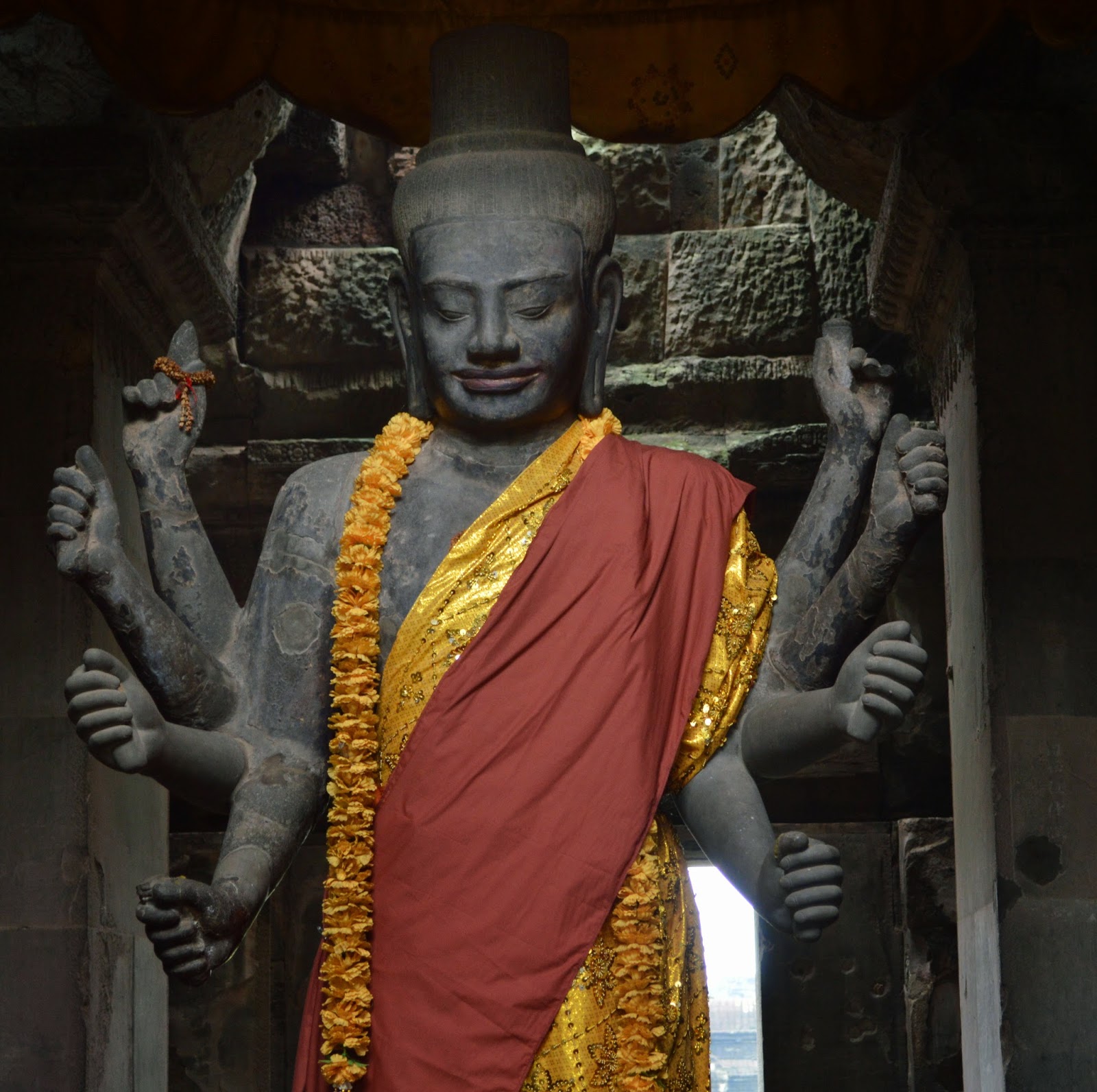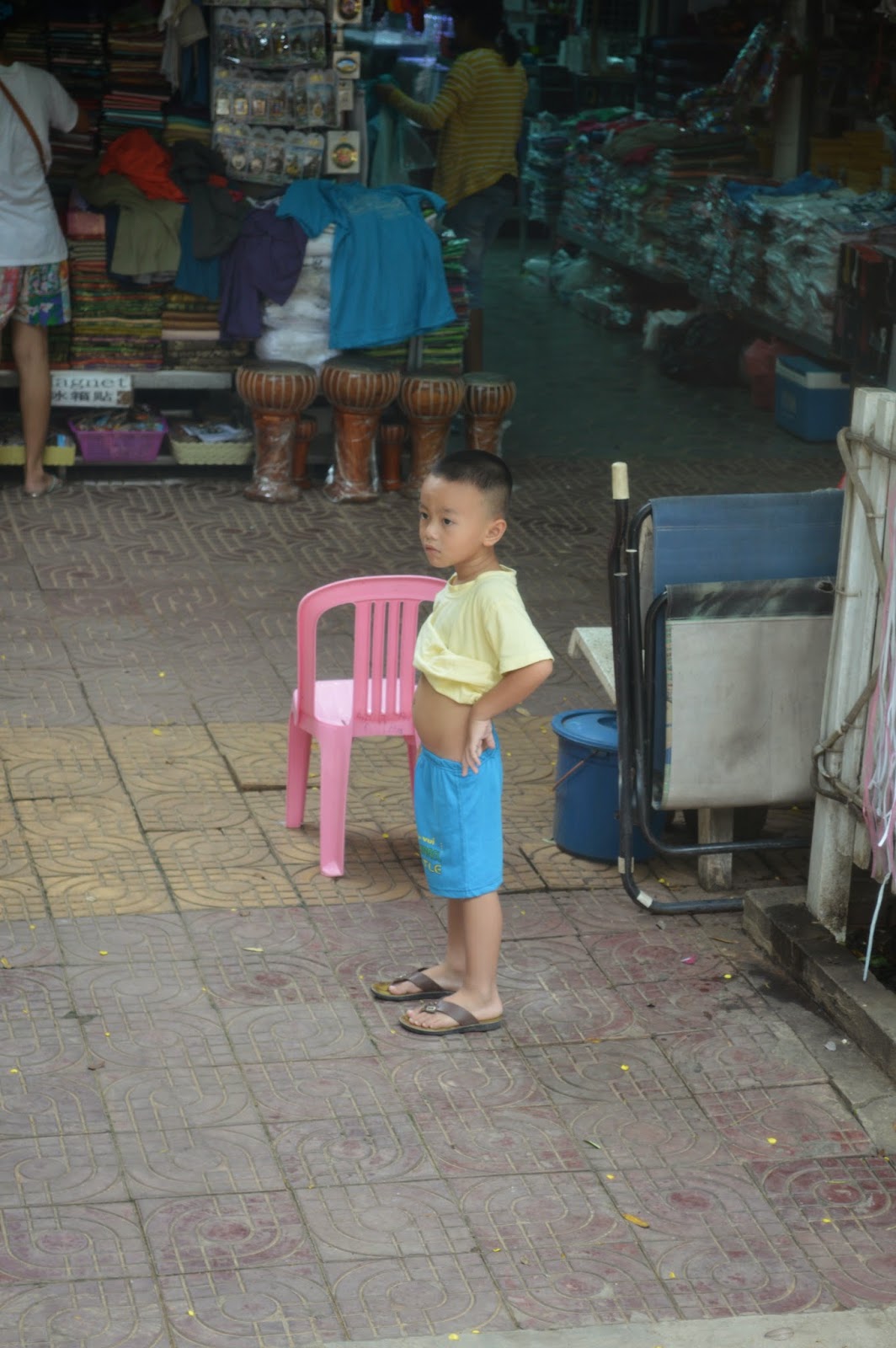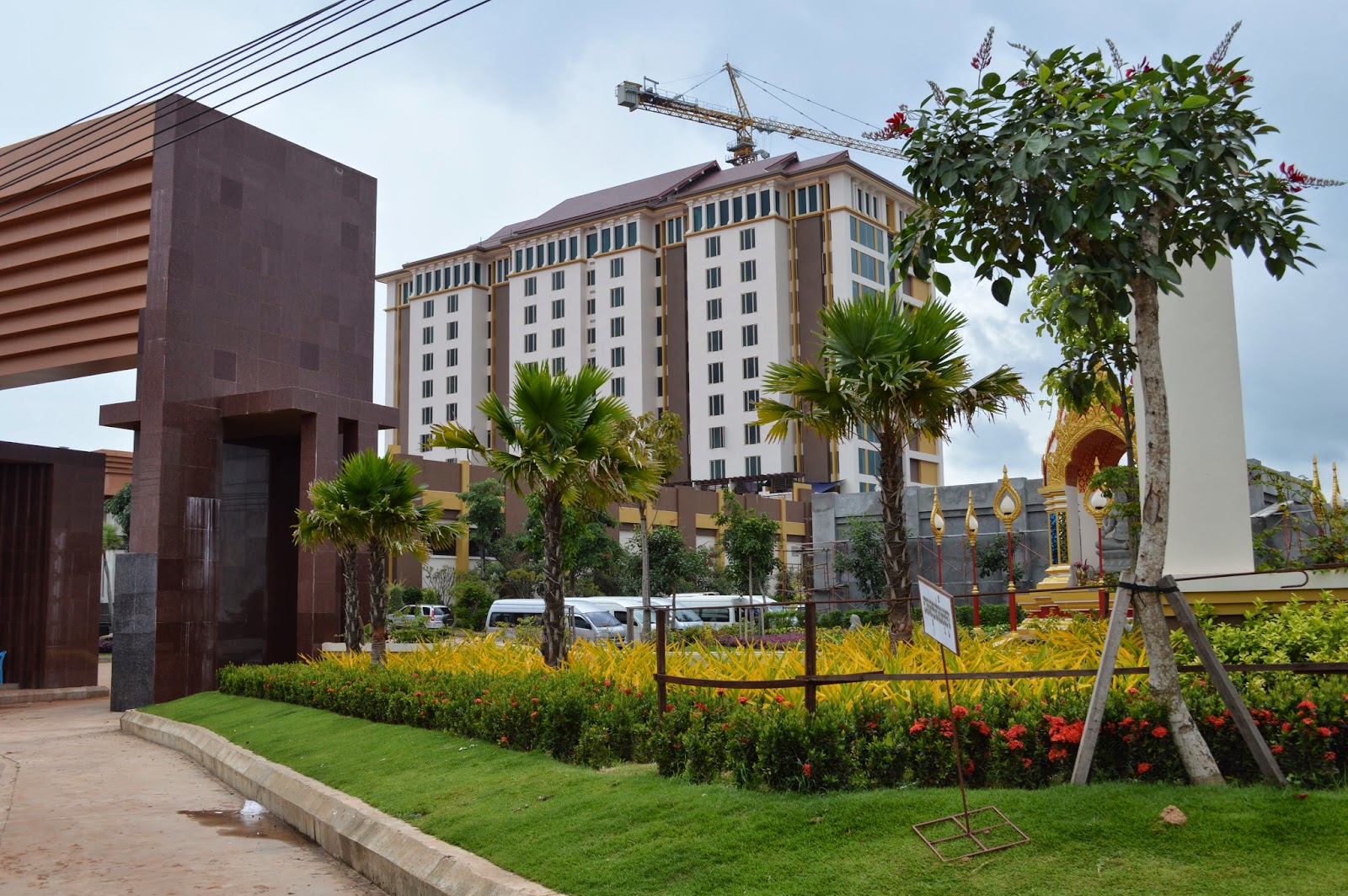All of the EP teachers participating in the Open House competition were invited to join a tour of Siem Reap. I was anxious to visit Cambodia, but I was not looking forward to a 5 hour bus ride . Siem Reap ranks #9 on CNN's list of top 25 Travel Destinations (right behind Hanoi at #8).
Besides that, Ase, my Norwegian friend who was also teaching in Thailand, warned me that these next few months will fly by, and I should definitely be traveling as often as I can!
I wasn't exactly sure what to expect, but I was anxious to see the countryside. Cambodia is one of the poorer ASEAN nations, but it's heritage hints at a civilization that was once pretty advanced.
And so our journey began….
We met at the border crossing near Sissaket… it makes Laos look cutting edge...

Did you really think there wouldn't be photos of children?
brothers….
 |
 |
Looks like supplies headed over the border….

The countryside was just beautiful, though hard to capture through the bus window!
Our first stop, as with all Thai adventures, was to eat. This buffet certainly did not disappoint!


Edgar made the most of his time as well.
As we got closer to the city, the scenery wasn't as pristine...
Our first stop was Tonle Sap Lake and the floating village.
Tonle Sap Lake is the largest freshwater lake in Southeast Asia. It drains into the Mekong River at Phnom Penh. In rainy season, you can take a boat upriver from Phnom Penh to Siem Reap, but at this time of year the water was far too low.
Fishing is a large industry here, so over time, fisherman have built their floating homes along the banks of the river. We prepared for a short tour of the area.
But really, nothing could have prepared me for what we saw. The conditions are very primitive.
These are primarily Vietnamese immigrants.
There is even a floating school.

These people have no plumbing. That means all of their water comes from the river and is boiled. It also means that all of their bathing, dishwashing, and body eliminations also go into the water.
Many Vietnamese fled from the communists during the mid to late 70s. They established themselves in Cambodia, only to deal with the Khmer Rouge and Pol Pot shortly after.
A popular fishing method during those years was to throw a grenade into the water, and collect the fish that floated to the surface… quick and easy (weapons, apparently weren't a problem). Obviously it had a serious impact on the ecology of the lake. Eventually, that was banned, only for some enterprising businessmen to discover that electrical pulses sent threw the water had a similar effect. Although that, too, was banned, our guide told us that it is still done illegally.

And, being sold at the local market, a taste of the snake that bit you.
We left the floating village behind and stopped in the city of Siem Reap.
We left the floating village behind and stopped in the city of Siem Reap.

The male and female figures are supposed to bring good fortune and fertility (only if you want it). Notice the different patterns on their hands.
Lotus buds as offerings….
A little trip down the road…. a smaller Killing Field. This is tiny compared to the one in Phnom Penh. It's amazing that this went on unrecognized for as long as it did. A horrific time in Cambodian history.
An informative book about this period of time is called, When Broken Glass Floats. A review can be found here:
A place to worship….
and a reminder of the atrocities.
A short and very somber visit before the journey to our first ruin...
The entire Angkor Wat complex is HUGE, covering over 400 square kilometers!!!! It is subdivided into smaller areas.
I just can't keep the names straight, so I'll just let you enjoy the views….
It was also BUSY. Hard to get a shot without lots of other travelers in them.
Edgar enjoying the botany.
Love my elephants!
Blind musicians...
On my way to the botanical gardens.
Outside of the grounds, tuk-tuks are everywhere waiting to give you a ride.
And hawkers selling postcards and plates with your picture on it (when did they take that one? and how did they get the photo on the plate so quickly?) just won't leave you alone.
and on to another part of the Angkor Wat complex….
The Hindu influence is more apparent in Cambodia.
These stairs were steep and narrow. I clung to the railings as I climbed.
It's amazing to realize that this complex was built from the 9th to the 15th century; long before machinery was able to simplify the work!
Off to lunch before the "Pièce de résistance"….
Ta Prohm
Ta Phrom is one of the more beautiful parts of the Angkor Wat complex. It has been mostly untouched, letting natural vegetation grow up, around, and engulf the temple.
It's a vast area. So vast that…. yes, I got totally lost and scared a lot of people waiting for me! No English signs, few English speaking people, and too many exits! Somehow I ended up at the south exit when I should have been at the west exit…. a couple of kilometers away.
A little more precise information from the Cambodian Tourism Office….
"Because of its natural state, it is possible to experience at this temple the wonder of the early explorers when they came upon these monuments in the middle of the nineteenth century.
Shrouded in dense jungle the temple of Ta Prohm is ethereal in aspect and conjures up a romantic aura. Fig, banyan and kapok trees spread their gigantic roots over stones, probing walls and terraces apart, as their branches and leaves intertwine to form a roof over the structures. Trunks of trees twist amongst stone pillars. The strange, haunted charm of the place entwines itself about you as you go, as inescapably as the roots have wound themselves about the walls and towers', wrote a visitor 40 years ago.
A Sanskrit inscription on stone, still in place, give details of the temple. Ta Prohm 3,140 villages. It took 79,365 people to maintain the temple including 18 great priests, 2,740 officials, 2,202 assistants and 615 dancers. Among the property belonging to the temple was a set of golden dishes weighing more than 500 kilograms, 35 diamonds, 40,620 pearls, 4,540 precious stones, 876 veils from China, 512 silk beds and 523 parasols. Even considering that these numbers were probably exaggerated to glorify the king, Ta Prohm must have been an important and impressive monument."
Our sightseeing complete, we had one more dinner with traditional Cambodian dance (uncanny how similar it is to Thai traditional dance).
In keeping with our recurring morning schedule,
we had wake-up call at 6, breakfast at 7, and we were on our way home at 8 AM.
Of course, there were stops for shopping….
Not Johnny Walker Red as you might have guessed, this is a fuel fill-up for all of those scooters on the road.
The fruit stand with classic Durian front and center.
Hard Rock Cafe goes international
My new friend who exchanged funny faces with me through the bus window.
for catching fish….
A stop to buy some mango trees; 3 for 100 baht. Ajaan Lertluck explained she only wanted one, but the seller said they were three for a dollar. Ajaan insisted on only one. Great bargaining technique. The seller said, only one? Well, there's no charge for just one!
Back through endless rice fields and mountains…
To the border.
Cambodia is a truly poor country, but like many who are struggling to add to their coffers and improve the economy, they have found a way to help….
Casinos at every border crossing!!!
Not my idea of running a country, but I hope the best for them!
It's beginning to sink in….. just 2 more months of teaching. There are so many things still to do! I found an article I passed along a friend with like traveling fantasies. It's pretty accurate… have a read.









































































































No comments:
Post a Comment